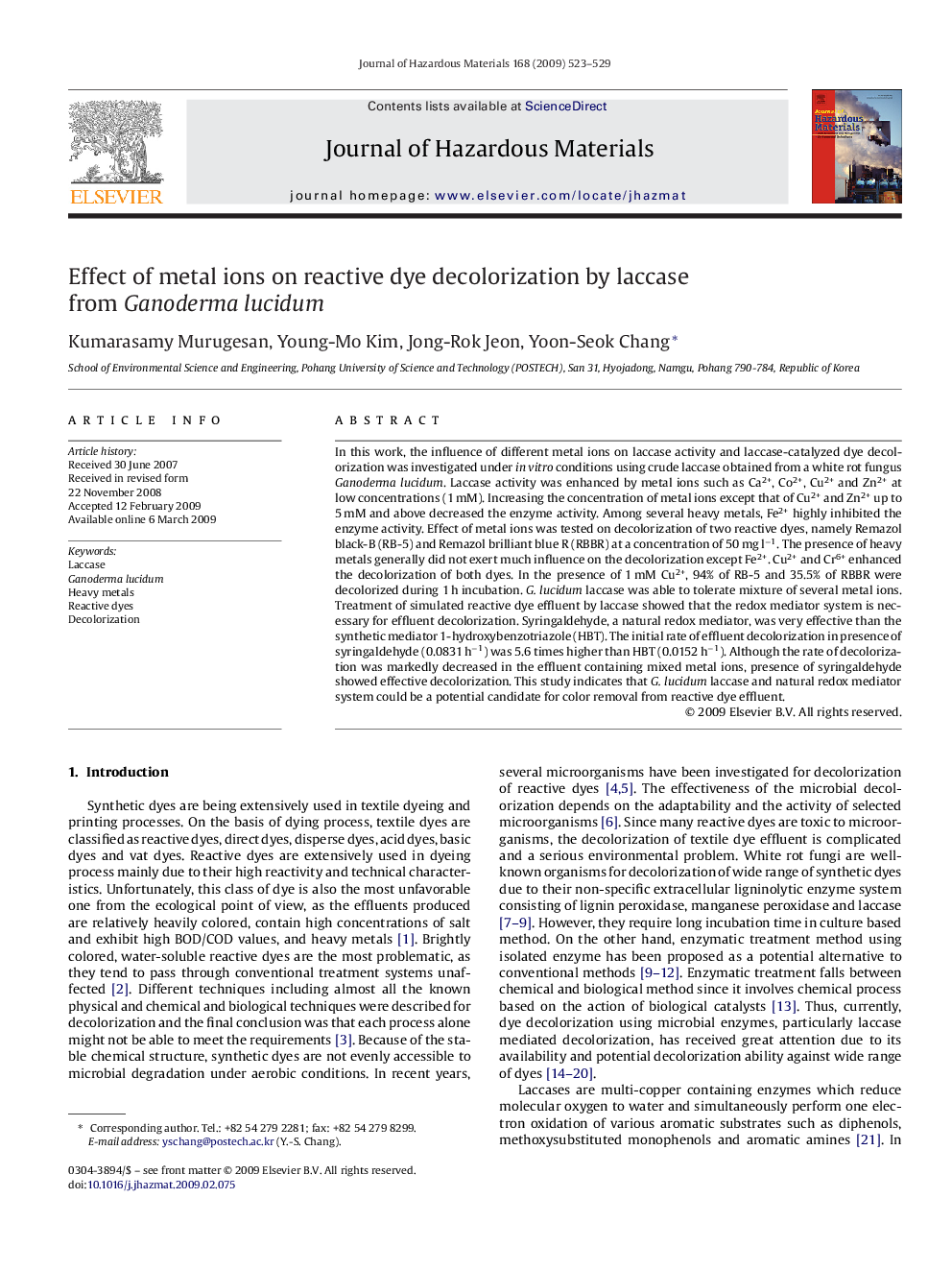| کد مقاله | کد نشریه | سال انتشار | مقاله انگلیسی | نسخه تمام متن |
|---|---|---|---|---|
| 581374 | 877842 | 2009 | 7 صفحه PDF | دانلود رایگان |
عنوان انگلیسی مقاله ISI
Effect of metal ions on reactive dye decolorization by laccase from Ganoderma lucidum
دانلود مقاله + سفارش ترجمه
دانلود مقاله ISI انگلیسی
رایگان برای ایرانیان
کلمات کلیدی
موضوعات مرتبط
مهندسی و علوم پایه
مهندسی شیمی
بهداشت و امنیت شیمی
پیش نمایش صفحه اول مقاله

چکیده انگلیسی
In this work, the influence of different metal ions on laccase activity and laccase-catalyzed dye decolorization was investigated under in vitro conditions using crude laccase obtained from a white rot fungus Ganoderma lucidum. Laccase activity was enhanced by metal ions such as Ca2+, Co2+, Cu2+ and Zn2+ at low concentrations (1 mM). Increasing the concentration of metal ions except that of Cu2+ and Zn2+ up to 5 mM and above decreased the enzyme activity. Among several heavy metals, Fe2+ highly inhibited the enzyme activity. Effect of metal ions was tested on decolorization of two reactive dyes, namely Remazol black-B (RB-5) and Remazol brilliant blue R (RBBR) at a concentration of 50 mg lâ1. The presence of heavy metals generally did not exert much influence on the decolorization except Fe2+. Cu2+ and Cr6+ enhanced the decolorization of both dyes. In the presence of 1 mM Cu2+, 94% of RB-5 and 35.5% of RBBR were decolorized during 1 h incubation. G. lucidum laccase was able to tolerate mixture of several metal ions. Treatment of simulated reactive dye effluent by laccase showed that the redox mediator system is necessary for effluent decolorization. Syringaldehyde, a natural redox mediator, was very effective than the synthetic mediator 1-hydroxybenzotriazole (HBT). The initial rate of effluent decolorization in presence of syringaldehyde (0.0831 hâ1) was 5.6 times higher than HBT (0.0152 hâ1). Although the rate of decolorization was markedly decreased in the effluent containing mixed metal ions, presence of syringaldehyde showed effective decolorization. This study indicates that G. lucidum laccase and natural redox mediator system could be a potential candidate for color removal from reactive dye effluent.
ناشر
Database: Elsevier - ScienceDirect (ساینس دایرکت)
Journal: Journal of Hazardous Materials - Volume 168, Issue 1, 30 August 2009, Pages 523-529
Journal: Journal of Hazardous Materials - Volume 168, Issue 1, 30 August 2009, Pages 523-529
نویسندگان
Kumarasamy Murugesan, Young-Mo Kim, Jong-Rok Jeon, Yoon-Seok Chang,